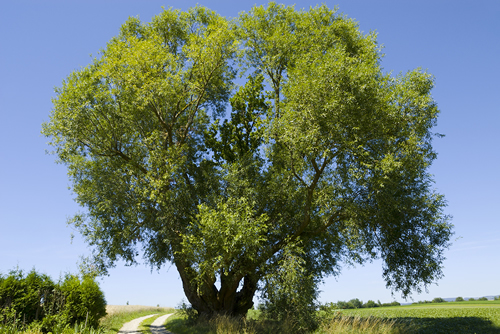White willow bark, found in the Lakota brand of anti-inflammatory medications, is a tree native to Europe and Asia. It is so named because of the white undertone of the tree’s leaves.
The use of white willow bark medicinally goes far back. Ancient Egyptians used white willow for inflammation. Hippocrates, the Greek physician wrote about its medicinal value in relieving aches and pains and reducing fever in the 5th century B.C.
How Does White Willow Bark Work?
In the early 1800s, the active ingredient in white willow bark – salicin – was identified, leading to an increase in demand for the compound. Salicylic acid, a synthetic version of salicin, was later developed. While effective, salicylic acid can lead to stomach ulcers and bleeding. Acetylsalicylic acid (aspirin), is a less harsh derivative of salicylic acid. However, it is still associated with stomach irritation.
White willow bark is often used a natural alternative to aspirin and other anti-inflammatory medications for conditions that cause pain, inflammation, or fever, such as:
- Acute back pain
- Fever
- Flu
- Joint pain
- Osteoarthritis
- Pain
White willow bark appears to be less irritating to the stomach lining than aspirin. Researchers have also suggested that white willow bark is more effective than aspirin because of other active compounds that are found in the bark but not the drug. Studies have shown white willow bark to be effective in relieving the pain associated with osteoarthritis and back pain. Lakota products contain white willow bark, indicated for the relief of pain and inflammation, along with a range of herbal remedies to help control pain. There are also a range of topical Lakota products to help.
White Willow Bark And Skin
White willow bark and salicylic acid may also be used topically in the treatment of acne. They work primarily as an exfoliant to help clear pores, but can also help to control the production of oil. There is evidence to show that there may be an increase in skin cell turnover thereby helping to repair sun damaged skin. You can find salicylic acid in Neostrata Blemish Spot Gel.
White Willow Bark Safety
Because white willow bark contains salicylates, the same precautions as aspirin should be taken during its use. The following people should not take white willow bark:
- People with an aspirin allergy or sensitivity
- People with peptic ulcer disease or kidney disease
- The herbs ginkgo, vitamin E, and garlic may increase the risk of bleeding if combined with white willow
- People with hyperuricemia, gout, and asthma
- Children and teenagers, especially with flu-like symptoms, chicken pox, or Reye’s syndrome
- Pregnant or nursing women.
White willow bark should be avoided two weeks before or after surgery.
Since white willow bark is related to aspiring, the same side effects may theoretically occur, especially at higher doses: ringing in the ears, ulcers, stomach burning, pain, cramping, nausea, gastrointestinal bleeding and liver toxicity, rash, dizziness, and kidney impairment.





great info